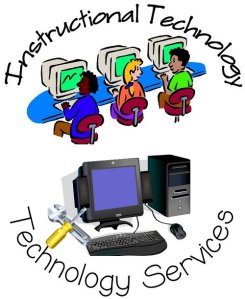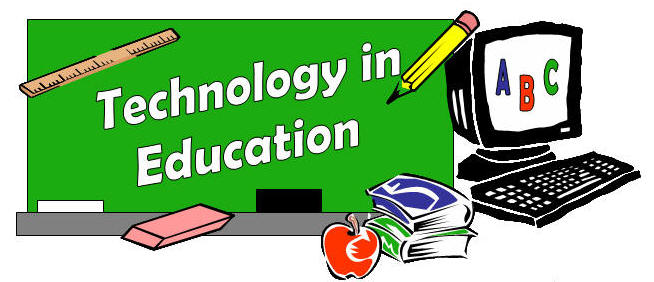The following is taken from a page on this blog... the purpose of "doubling up information is to allow for the Search engine on the blog to pick up information that might be useful.
Edtechnology, BYOD and iPad Initiatives
Why do we need to explore instructional technology, mobile devices in education? Are we computer science teachers or just teachers? Well if you ask yourself that, reflect on the impact that the cell phone has made in your life... or the internet or email. How has this form of technology improved your life? Was it a fad that went away? Obviously the answers to these questions all point in the direction that technology is here to stay, and as educators or role is constantly evolving, as it always has... So don't fight it, embrace it. Feel lost or that the kids may know more than you? Some might, some may not...
But who cares, isn't it exciting when kids can teach you something new??
As more schools are becoming more "Tech Savvy" and discovering that the best way to reach students is to teach them skills in how to use technology in a world filled with so many innovations. As educators, it is our job to go beyond the "shiny", newness of devices and find ways to use the technology in meaningful ways to improve student engagement, knowledge and skills - which will of course take them further in the workforce. My motto is... The Edtech tool, must go beyond being a cool gadget... It's got to be more than a "bell or a whistle". It has to improve learning.
So You think you need iPads in your classroom or at school? Yes they are shiny and totally cool, but are they worth the cost?? Watch the video below from MI Streamnet (Michigan Education)
http://www.mistreamnet.com/vidflv.php?who=macul2011s13hd
Part of my quest in learning more about Edtech tools is to research the best on-line sources available and examine how these tools can be used. In addition to this, with more schools getting iPads to further help reduce the "digital divide" and provide opportunities for all kids to have exposure to these tools. It is important for educators to look at how these tools can be effectively used. In my home we are fortunate enough to have an iPad, a device that has proven to be extremely well received by my 5 year old daughter. I love how intuitive the device is, because it allows her to navigate through the various functions and apps, through touch screen technology. She is able to use the device seamlessly, way faster than she would be able to use a laptop. Because of her engagement with the device, I started thinking about how can we meaningfully integrate these devices in the classroom, from primary to high school, and go beyond having learning stations with "Bells and Whistles".
Fortunately, there are people who are far ahead of me with the integration of technology in the classroom, and there are tons of on-line resources where people are sharing their findings. The following resource links were taken from a blog suggested by a person I follow on Twitter. Not to go off on a different tangent, but Twitter has been the best PD that I have been a part of in a long time! You want to learn more about digital technology? You don't need to attend a conference... create your own PLN or your own "Virtual Conference" via Twitter! All you need is a computer or a mobile device!
Fortunately, there are people who are far ahead of me with the integration of technology in the classroom, and there are tons of on-line resources where people are sharing their findings. The following resource links were taken from a blog suggested by a person I follow on Twitter. Not to go off on a different tangent, but Twitter has been the best PD that I have been a part of in a long time! You want to learn more about digital technology? You don't need to attend a conference... create your own PLN or your own "Virtual Conference" via Twitter! All you need is a computer or a mobile device!
Top 9 Resources for an Ipad Initiative
Amanda Allen and David Lopez, who introduced a 1-to-1 iPad program at St. Genevieve Elementary in Los Angeles, suggest the apps, Web sites, and programs they found most useful.
1. Popplet--Simple, graphic organizing tool. All grade levels.
2. iCardSort--A virtual set of Post-It notes. Middle School and up.
3. Flashcards+--Allows students and teachers to easily create paperless flashcards. Syncs to a website called Quizlet that lets one download flashcards others have uploaded. “It’s kind of like crowdsourcing for studying,” Lopez said.
4. GoodReader--A digital PDF reader that allows students to highlight passages and take notes in the margins. Middle School and up.
5. Apple’s Volume Purchase Program for Schools--Sells apps at a discount for schools when they are purchased in quantities of 20 or more. All grade levels.
6. Edmodo--One of “the best things teachers will use,” said Lopez. “In a nutshell it’s Facebook for the classroom. It looks and works like Facebook and it does everything: calendars, lists, document hosting, quiz assignments. It worked really well with the iPad program with our school. Everyone had a device and a place to communicate.” All grade levels.
7. TeenTribune.com--A website that provides current events for students. Middle School and up.
8. Good Notes--A note-taking app that records audio with the notes. Middle school and up.
9. Mathaliens--A basic mathematics app in which an alien pops up when students answer correctly. Kindergarten-fourth grade.
2. iCardSort--A virtual set of Post-It notes. Middle School and up.
3. Flashcards+--Allows students and teachers to easily create paperless flashcards. Syncs to a website called Quizlet that lets one download flashcards others have uploaded. “It’s kind of like crowdsourcing for studying,” Lopez said.
4. GoodReader--A digital PDF reader that allows students to highlight passages and take notes in the margins. Middle School and up.
5. Apple’s Volume Purchase Program for Schools--Sells apps at a discount for schools when they are purchased in quantities of 20 or more. All grade levels.
6. Edmodo--One of “the best things teachers will use,” said Lopez. “In a nutshell it’s Facebook for the classroom. It looks and works like Facebook and it does everything: calendars, lists, document hosting, quiz assignments. It worked really well with the iPad program with our school. Everyone had a device and a place to communicate.” All grade levels.
7. TeenTribune.com--A website that provides current events for students. Middle School and up.
8. Good Notes--A note-taking app that records audio with the notes. Middle school and up.
9. Mathaliens--A basic mathematics app in which an alien pops up when students answer correctly. Kindergarten-fourth grade.
From "The Mobile Native Blog"
iPads in the Classroom:
Video on Social Media and Improving Education
The video below,"Building Bridges With Social Media", taken from MI Streamnet, explores specific strategies to help engage parents, students, and community members by using interactive social media and online tools. You will learn how to use social media to recruit students, engage parents, and tell your school's story. Whether you work at a private school, a public or charter school, or even at a university, these social media techniques will help you to engage your target audience, communicate the mission and vision of your school, serve as another resource in your student recruitment strategy, and inspire business and community involvement. Tools covered include eNewsletters, Facebook, Twitter, your school web site, Ning, YouTube, survey tools, email, teacher blogs, student portfolios, principal's page, and (gasp!) cell phones."Building Bridges With Social Media" -http://www.mistreamnet.com/vidflv.php?who=macul2011s24hd
Other Resources on ipad Integration in Schools...
Techchef4u - Blog on iPad initiative reflections
The Mobile Native Blog - "Recent Mobile Learning Findings" - Lots of great links on iPads and devices in the classroom. By the way, I got a link to his blog via Twitter and my "Tweetblender" on this blog!
The Journal - "Using iPads with Mixed Ability Students"
Kalida Local Schools iPad Initiative Page - Lots of information and documents to support the project
Greene Country Schools iPad Initiative Page - Their motto is "Creating a level playing field" (taking away the digital divide)
Educause - Collection of articles and resources on an iPad Initiatives
Scoopit! - iPad Ideas I Like - A variety of articles from Scoop it authors on iPad initiatives
BYOD Initiatives...
The following "poster" is an Infographic for BYOD (Bring Your Own Device) Initiatives... Basically it means, if you have the device bring it... the school will support you and develop skills in how to incorporate the device in your learning. Then taking this one step further, schools can then further support those students who do not have access to the technology and help teach them how to use the devices in a meaningful way... You know, going beyond asking Siri ridiculous questions!

Learn More About BYOD via "The Mobile Native"
BYOD:
More Via "The Mobile Native" on Smart Phones
Smart Phones (Mobile Learning Devices) in the Classroom
The following link provides videos from Michigan Education that explore iPads in the classroom, to good apps to improve writing, to wikis to Skyping in the classroom... Lots of good videos created by educators.



